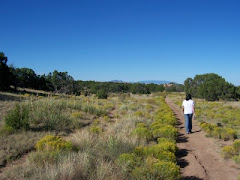"If you do, you start missing everybody." J.D. Salinger

E. has read a good many books over the summer break, and we begin here with a look at The Catcher in the Rye.
It's a bildungsroman (coming of age story) and was first published in July 1951; parts of the novel appeared as short stories in Collier’s, December 1945, and in The New Yorker, December 1946. The protagonist is Holden Caulfield, who is narrating from a psychiatric facility a few months after the events of the novel. He narrates in the first person, describing in great and often amusing detail what he sees and experiences. He is describing a long weekend in the late 1940s.
"'I was thinking about the lagoon in Central Park, down near Central Park South. I was wondering if it would be frozen over when I got home, and if it was, where did the ducks go? I was wondering where the ducks went when the lagoon got all icy and frozen over. I wondered if some guy came in a truck and took them away to a zoo or something. Or if they just flew away."

In a way, Holden wants to connect with other people on an adult level, but part of him wants to reject the adult world as “phony” or superficial and to retreat into his own memories of childhood. This is the main conflict of the story--that is, for the most part, the conflict is within Holden himself.
The novel covers alienation as a form of self-protection by using engaging, conversational language that lurches from exaggeration to vagueness, and the phoniness of the adult world as perceived by someone who hasn't quite entered that world and doesn't quite want to enter it.
Here's a pretty good SparkNotes quiz on the book. This is an excellent overview by a fellow in Germany.
Catcher in the Rye Truths:
All morons hate it when you call them a moron. Ch. 6
Almost every time somebody gives me a present, it ends up making me sad. Ch. 7
Catholics are always trying to find out if you're Catholic. Ch. 15
That's the nice thing about carousels, they always play the same songs. Ch. 25
















